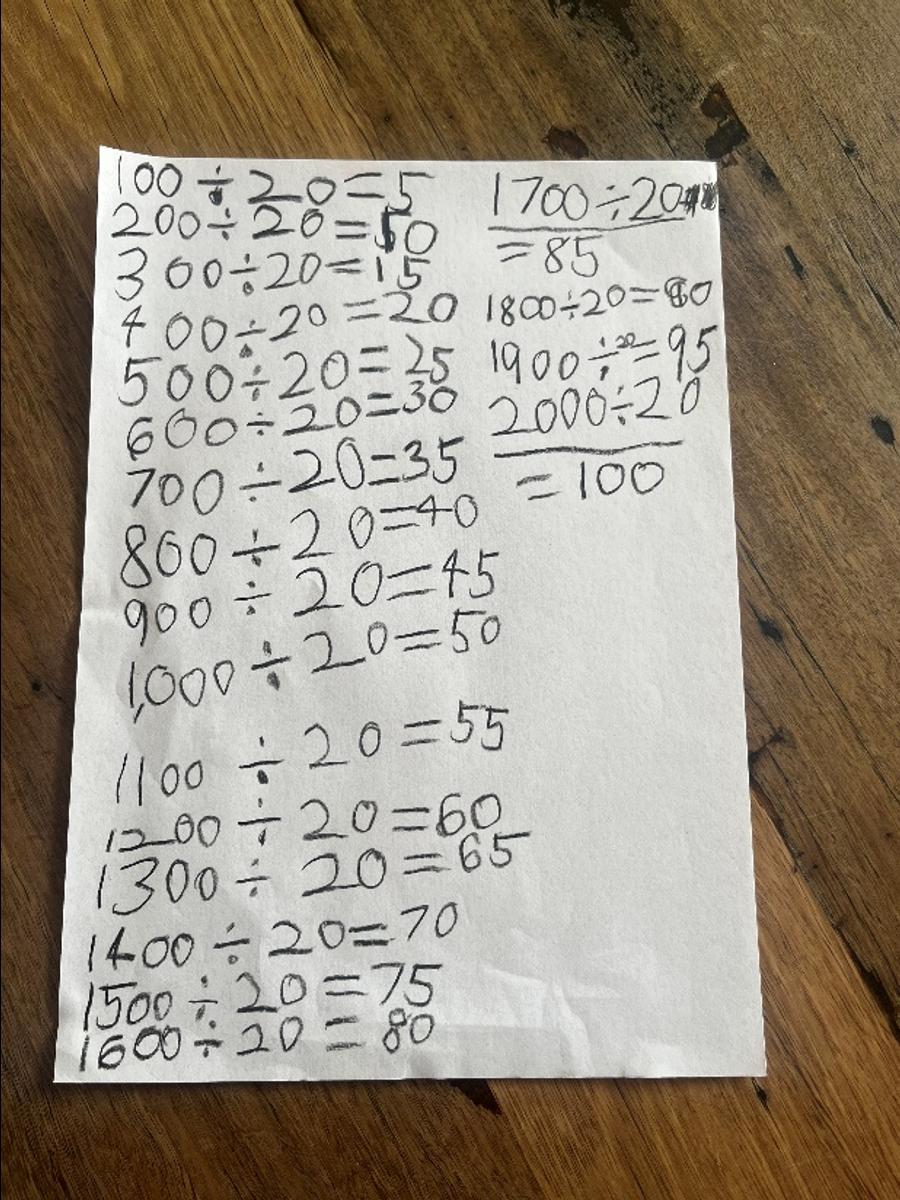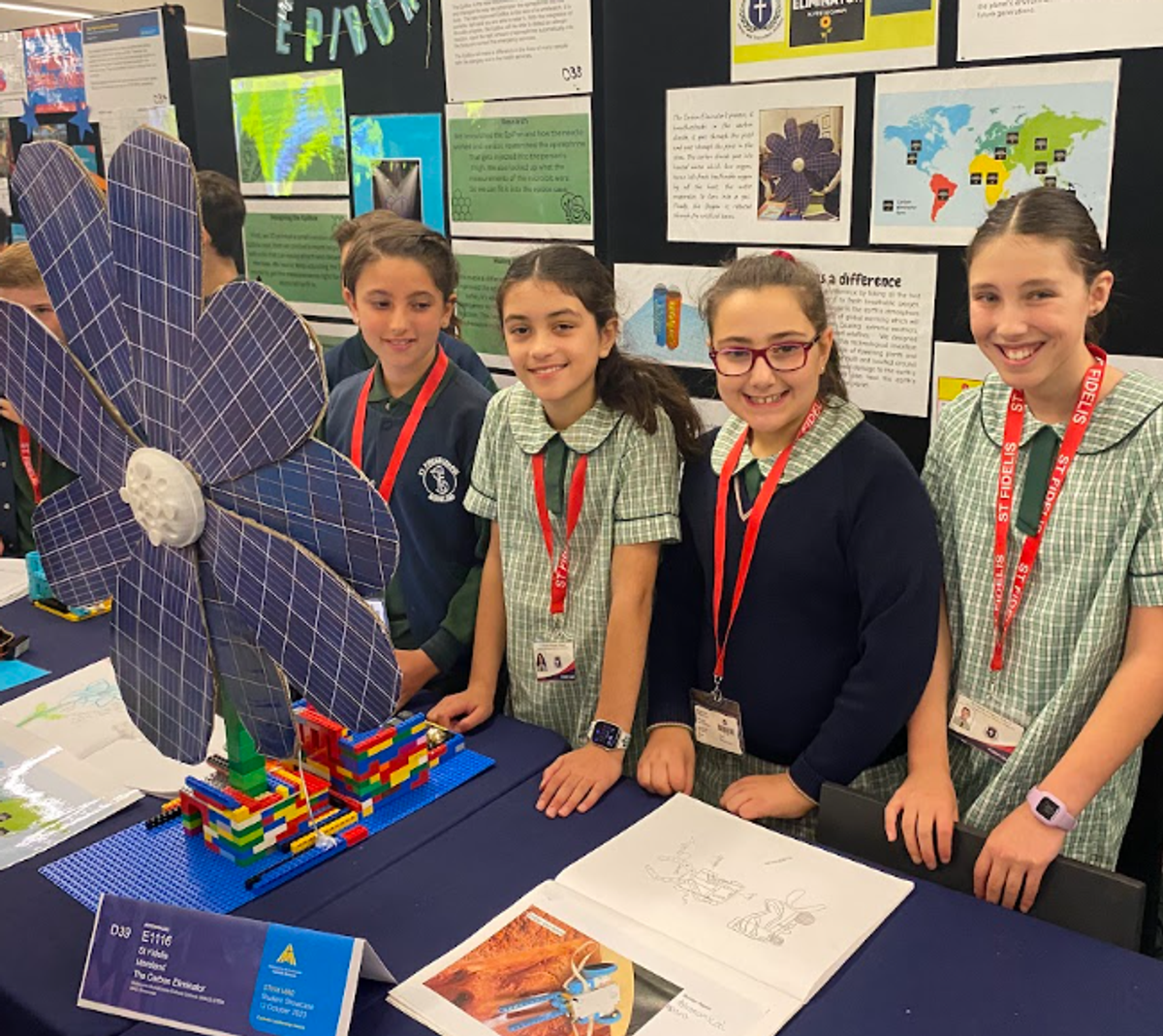Learning & Teaching
Learning and Teaching encompasses the following areas: Student Outcomes, Curriculum, Assessment, Reporting, Principles and Pedagogy.

Learning & Teaching
Learning and Teaching encompasses the following areas: Student Outcomes, Curriculum, Assessment, Reporting, Principles and Pedagogy.


This year, ten students from St. Fidelis completed the Victorian Premeir’s Reading Challenge. The challenge encourages students to read a set number of books over Term 3. Since the Challenge began in 2005, more than 4 million students have read over 57 million books.
Congratulations to the following students for their outstanding efforts and persistence in meeting their reading targets by the end of Term 3. Also, thank you to the parents for your support with this challenge.


Congratulations to:
Daniel Porter - FAP
Caleb Porter - 3/4 BP
Isabella Joson - 5/6 OS
Benjamin Nahas - FAP
Gemma Piotti - 3/4BZ
Poppy Allen-Cutts - 3/4Z
Ava Barett - 1/2VS
Lilcon Fairbanks - 1/2VS
Thomas Cicero - 5/6GT
Max Huff - FAP
Our reporting focuses on communicating the learning and teaching at St. Fidelis Catholic Primary School so that students, teachers and parents can work together to improve student learning.
The Semester Two report will indicate your child’s progress in the 8 Learning Areas and capabilities of the Victorian Curriculum. The reports will show your child’s progress against the achievement standards.
Semester Two reporting will address the following earning Areas:
The Capabilities addressed this semester will be:
Teachers will use accurate and objective judgements of assessment and evidence gathered to help them report against the achievement standards defined for each curriculum area taught.
The Term 4 Curriculum Overviews will include the focus for each curriculum area. These will be emailed to parents this week.
Your child’s achievement will be displayed using a five-point scale and a dot indicating the year-level standard that your child has achieved.
Your child’s report will be available online from Friday, 8th December.
More information about the reports will be available as the term progresses.
Have a wonderful week.
Maths games days
Thanks again to all parents who have offered to support us on the Maths games days. I look forward to working with you on these days.
Year 1/2 Thursday 25th October
Foundation Wednesday 1st November
Year 3/4 Thursday 9th November
Year 5/6 Thursday 23rd November
It is always so lovely as a Maths teacher, to see students making connections in the Maths they are doing. I recently took a group of juniors and worked on division. Watching these students find connections between one fact and applying it to work out other ones, made me see how easily those who see the relationships between numbers and facts can work things out.


Real estate is all about, ” location, location, location” and in Maths it’s all about relationships, the relationship between numbers. When students see how numbers are connected, they can work more efficiently.
An example is here, Patrick Muscara (Year 1) worked out 100 divided by 20 was 5. He then explained that if 5 lots of 20 make 100, then 200 divided by 20 must be 10, double the answer as 200 is double 100. He then went on to solve further examples.
I am currently testing Foundation students in counting and place value and just love seeing how much growth they have made this first year of school. So many can count by one to 100 and beyond. They are reading numbers up to 100 as well.
If you want to help your Foundation child, you may want to check they can do these.
Across the school, all levels have been teaching Division.
If you would like further ideas to support your child with dividing you may like this link https://thirdspacelearning.com/blog/guide-division-for-kids-explained/
It explains how Foundation students are working on sharing objects equally, making fair shares.
Grade 1 students notice this and continue with modelling stories involving sharing equally and dividing.
Grade 2 work on recognizing and representing division as grouping into equal sets and solving simple problems using these representations.
Grade 3 start looking at the relationship between multiplication and division and use their multiplication facts to help them solve division problems.
Grade 4 build on their knowledge of multiplication and use this to solve division problems using efficient strategies.
Grade 5 move to solving large numbers divide by a single digit number using efficient strategies and making sense of remainders.
Grade 6 work on problem solving with all 4 processes and move to dividing decimals by to solve of 10 as well as divisions by non-zero whole numbers where the results are terminating decimals.


THE STEM MAD SHOWCASE
Last Thursday, the St. Fidelis students had the opportunity to showcase their talents as innovators and designers at the STEM MAD showcase. They did an amazing job presenting to the judges and sharing their ideas. They were even radio stars and met the LEGO Master from season 3, Ryan Evans.
STEM MAD Showcase acknowledges and promotes STEM learning initiatives that address real-world problems and demonstrate how students in Catholic schools take action that matters.
Last Friday, the St. Fidelis STEM MAD students showcased their learning and designs to acknowledge their STEM initiatives. They showcased prototypes that addressed real-world problems that make a difference (MAD) through Science, Technology, Engineering and Mathematics with the school community, staff and students.


The day was a real success and the students were amazing, I am so proud of each one of them. The 10 students who pitched and showcased their prototypes were in their element. You could see the learning assets in action, and you all probably heard it when they were explaining their prototype on the RADIO. That was an experience for all of us. The best thing was seeing the children smiling, and sharing the feeling that they had created something different and new and sharing their knowledge with the curators, other students and adults.


The icing on the cake was meeting Ryan Evans from LEGO MASTERS and he was very impressed with the students designs and prototypes using LEGO. Students should be proud what they have achieved. It was an amazing experience for us all.
Here are our STEM MAD students’ prototypes and photos:


The EpiBox is the new revolutionised epipen! It has transformed and changed the way how we administer epinephrine into the body. The new improved EpiBox is the size of a wristwatch, it is portable, light and you are able to wear it. With the integration of MicroBit program, the EpiBox will be able to detect an allergic reaction, inject the right amount of epinephrine automatically into the body and contact the emergency services. The EpiBox will make a difference in the lives of many people with allergies and in health services.
Designed and created by Luca S, Christian P, Sebastian L, Xavier D


The Carbon Eliminator is a revolutionary technology that will enable to biomici a flower by going through the photosynthesis process. However, the Carbon Eliminator is the height of Wind Turbine, it is self sustainable, it transforms carbon dioxide to fresh oxygen. This technology will be constructed and built in areas that deforestation and industrial mining have occurred, such the Brazilian rainforest. By the Carbon Eliminators biomici the photosynthesis process around the world, this will hopefully support and heal the planet’s environment and produce a cleaner environment for future generations.
Designed and created by Zara A, Erica D, Gemma P, Mia N, Scarlett F


We have improved on recent Mars Rovers because Astronomica can carry up to 5-6 samples, and it is only in its prototype stage. We estimate that if it was a real rover, it could hold up to 50-60 rocks as a rover is generally the size of a car. As we compared to NASA’s latest rover, Perseverance, it can only grab one rock sample at a time and also takes longer to pick it up. Whereas Astronomica picks up rocks in a flash! The legs on the sides are for a few things. The main reason for them is to help the rover cross hills and climb rocky hills and rough surfaces. Although the wheels are strong and powerful, they have a smooth surface which is only good for flat ground, unlike Mars. This is why it needs the extra legs. Another reason for the legs is so they can support the rover when landing. The legs are tough, but also flexible! If they were to make this rover in real life, the legs would have built-in springs so the rover sticks to a smooth landing!
Designed and created by Amber S, Assisted by Isabella J
SSV Northern Metropolitan Region Athletics Championships
On Wednesday 11 October, the SSV Northern Metropolitan Region Athletics Championship was held at Meadowglen Athletics Track. St Fidelis PS were represented by the following students:
Kiara Louca 12/13 Girls 100m & 4 x 100m Relay
Catherine Francione 12/13 Girls 4 x 100m Relay
Genevieve Mmadike 12/13 Girls 4 x 100m Relay
Madeleine Leahy 12/13 Girls 4 x 100m Relay
Maya Woodhouse 12/13 Girls 4 x 100m Relay (emergency)


Congratulations to all the girls on wonderful performances at this event.
We are proud of their efforts! Also, a big thank you to Maya for making herself available for practice and acting as an emergency for the relay team on the day.
A special thank you to the parents who were able to transport, supervise and support the competitors at this event.
School Sports Uniforms
St Fidelis sports uniforms borrowed by students to play soccer, football and netball during the interschool sports season need to be returned to school as soon as possible.
Items include football jumpers, soccer shirts, football & soccer socks, boots, shin guards, netball dresses and netball shirts.
ST FIDELIS SPORTS DAY 2023
The St Fidelis Annual Sports Day for students from Foundation-Year 6 will be held on Tuesday 12 December 2023 at St Fidelis Primary School.
All students must wear the school’s sports uniform (hats compulsory).
If possible, the students can wear coloured socks, or coloured ribbon in their hair, on their hats or on their t-shirts to distinguish the teams apart. It is advisable that students wear sunscreen. Sunscreen can be in the colours of the teams.
The event will be held at St Fidelis Primary School during the day. Further details will follow.
HOUSE TEAMS
Some years ago, in consultation with the Parish Priest, Father Cartwright and the St Fidelis school staff, it was decided that the school’s house teams would be given names that represent not only the values of our school but the history of the St Fidelis Parish and our Catholic tradition. The names of each of the school’s house teams and a brief history of the connection between the St Fidelis Parish and the team names follow:
ST FIDELIS' SCHOOL HOUSE TEAMS | |
|---|---|
MacKillop (Blue) | MacKillop has been named after Mary MacKillop, who was also known as Saint Mary of the Cross and was an Australian Roman Catholic nun who helped to found the Sisters of St Joseph of the Sacred Heart and a number of schools and welfare institutions throughout Australia focussing on education for the poor. She is the only Australian to be recognised by the Roman Catholic Church as a saint. |
Mannix (Green) | Mannix has been named after Archbishop Daniel Mannix (1864-1963). Archbishop Mannix was a notable religious and political leader in his home country of Ireland and also his adopted country, Australia. He was well known for his passion, strength of character, academic accomplishments and his commitment to education. St Fidelis’ Catholic Church was blessed and declared open on Sunday 23 October 1938 by Archbishop Mannix. |
Lee (Gold) | Father James Joseph Lee was the first Parish Priest of St Fidelis and served the Parish from 1927 until his death in 1941. He is remembered as being a champion for the poor and of children. St Fidelis’ Catholic Church, which was declared open on Sunday 23 October 1938, was built following eleven years work by the parishioners under the spiritual guidance of Father James Joseph Lee. |
Daly (Red) | Father Daniel Daly came to St Fidelis in 1959. During his 13 years as parish priest, the parish grew quickly and Father Daly worked hard to improve and renovate the parish and school facilities. In order to accommodate the many parishioners and their children, he authorised the building of Our Lady of Perpetual Succour Church and School in Pascoe Vale South. Father Daly is remembered as a man of great vision and initiative whose spiritual leadership and acceptance of all, helped build the wonderful parish of St Fidelis, Moreland. |